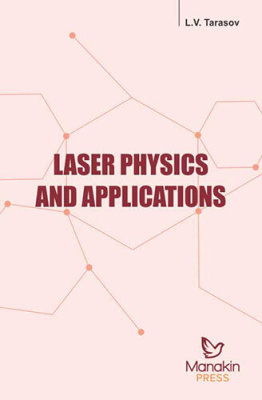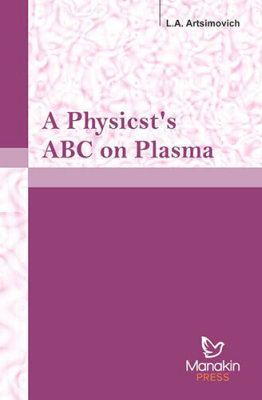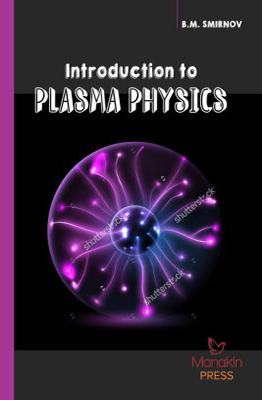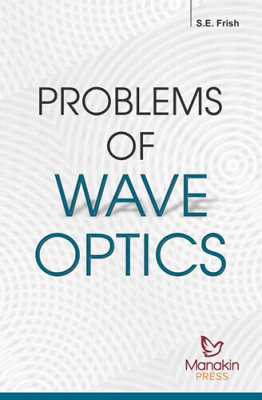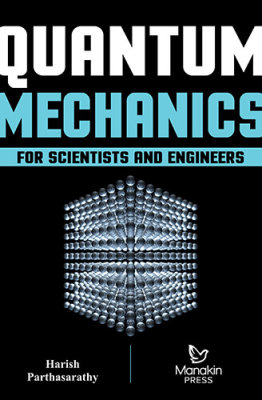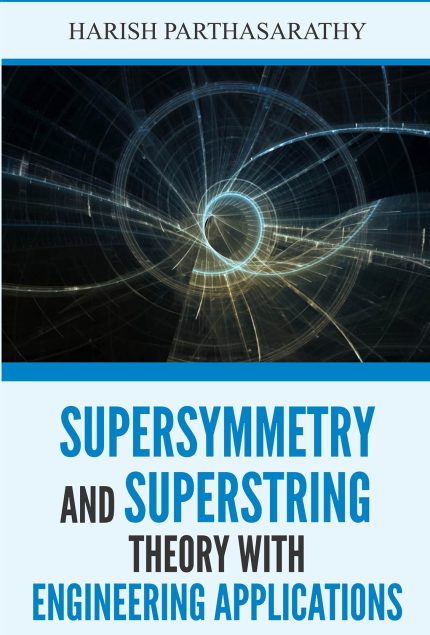L.V. Tarasov | Category: Physics
Binding Type: Paperback Binding
Book Details
ISBN: 9789386677082
YOP: 2018
Pages: 196
Order also on
First lasers made in 1960 paved the way for the vehement development of laser technology. Today, lasers and laser systems find wideuse in many fields of science and engineering. They are employed in communications systems, computers, navigation equipment,measuring instruments, and in complicated technological processes. Biology, medicine, and various chemical and physical investigations utilize lasers to advantage. Wide use of lasers in science and technology is due to the specific properties of laser radiation. The laser is a generator of coherent light. Unlike other sources of light, such as incandescent lamps or arc lamps, the laser produces radiation with a highly regular light field, outstanding in its high coherence, monochromaticity and directivity
Chapter 1- BASIC LASER PRINCIPLES
1.1 Light Wavesand Photons
1.2 Optical Coherence
1.3 Quantum Transitions in Absorption and Emission of Light
1.4 The Active Medium. Creating .a Population Inversion
1.5 Laser Oscillation in Optical Resonant Cavity
1.6 Basic Laser Characteristics
1.7 A Historical Review of the Laser
Chapter 2- TYPES OF LASERS
2.1 A Laser Exposition. Pumping Methods
2.2 So1id State Lasers
2.3 OrganicheLasers
2.4 Photodissociation Lasers
2.5 IonandAtomicLasers
2.6 MolecularLasers
2.7 Electroionization Lasers
2.8 Gas Dynamic Lasers
2.9 Chemica1Lasers
2.10 Plasma Lasers
2.11 Semiconductor Lasers
2.12 Confinement of the Beam within the Resonator
Chapter 3- CONTROL OF THE LASER OUTPUT
3.1 Intracavity Control of Spectral Characteristics
3.2 Methods of O-switching
3.3 Pulsed Lasing
3.4 Mode Locking for Ultrashort Pulses
3.5 Modifying the Spatial Structure of the Laser Output
3.6 Frequency Transformations in Nonlinear Media
3.7 Wavefront Correction of the Laser Output
3.8 Light Beam Manipulation
Chapter 4- APPLICATIONS OF LASERS
4.1 Material Working
4.2 Lasersin Medicine
4.3 1sotopeSeparation
4.4 Holography
4.5 Information Related Applications
4.6 Optical Communications
4.7 Ranging and Measurement
4.8 Environmental Measurements. Quality Control
4.9 Thermonuclear Fusion
First lasers made in 1960 paved the way for the vehement development of laser technology. Today, lasers and laser systems find wideuse in many fields of science and engineering. They are employed in communications systems, computers, navigation equipment,measuring instruments, and in complicated technological processes. Biology, medicine, and various chemical and physical investigations utilize lasers to advantage. Wide use of lasers in science and technology is due to the specific properties of laser radiation. The laser is a generator of coherent light. Unlike other sources of light, such as incandescent lamps or arc lamps, the laser produces radiation with a highly regular light field, outstanding in its high coherence, monochromaticity and directivity
Chapter 1- BASIC LASER PRINCIPLES
1.1 Light Wavesand Photons
1.2 Optical Coherence
1.3 Quantum Transitions in Absorption and Emission of Light
1.4 The Active Medium. Creating .a Population Inversion
1.5 Laser Oscillation in Optical Resonant Cavity
1.6 Basic Laser Characteristics
1.7 A Historical Review of the Laser
Chapter 2- TYPES OF LASERS
2.1 A Laser Exposition. Pumping Methods
2.2 So1id State Lasers
2.3 OrganicheLasers
2.4 Photodissociation Lasers
2.5 IonandAtomicLasers
2.6 MolecularLasers
2.7 Electroionization Lasers
2.8 Gas Dynamic Lasers
2.9 Chemica1Lasers
2.10 Plasma Lasers
2.11 Semiconductor Lasers
2.12 Confinement of the Beam within the Resonator
Chapter 3- CONTROL OF THE LASER OUTPUT
3.1 Intracavity Control of Spectral Characteristics
3.2 Methods of O-switching
3.3 Pulsed Lasing
3.4 Mode Locking for Ultrashort Pulses
3.5 Modifying the Spatial Structure of the Laser Output
3.6 Frequency Transformations in Nonlinear Media
3.7 Wavefront Correction of the Laser Output
3.8 Light Beam Manipulation
Chapter 4- APPLICATIONS OF LASERS
4.1 Material Working
4.2 Lasersin Medicine
4.3 1sotopeSeparation
4.4 Holography
4.5 Information Related Applications
4.6 Optical Communications
4.7 Ranging and Measurement
4.8 Environmental Measurements. Quality Control
4.9 Thermonuclear Fusion
| Weight | 0.255 kg |
|---|---|
| Dimensions | 21.7 × 14 × 1.1 cm |
| yop |
2018 |
| subject-category |
Physics |
| isbn |
9789386677082 |

